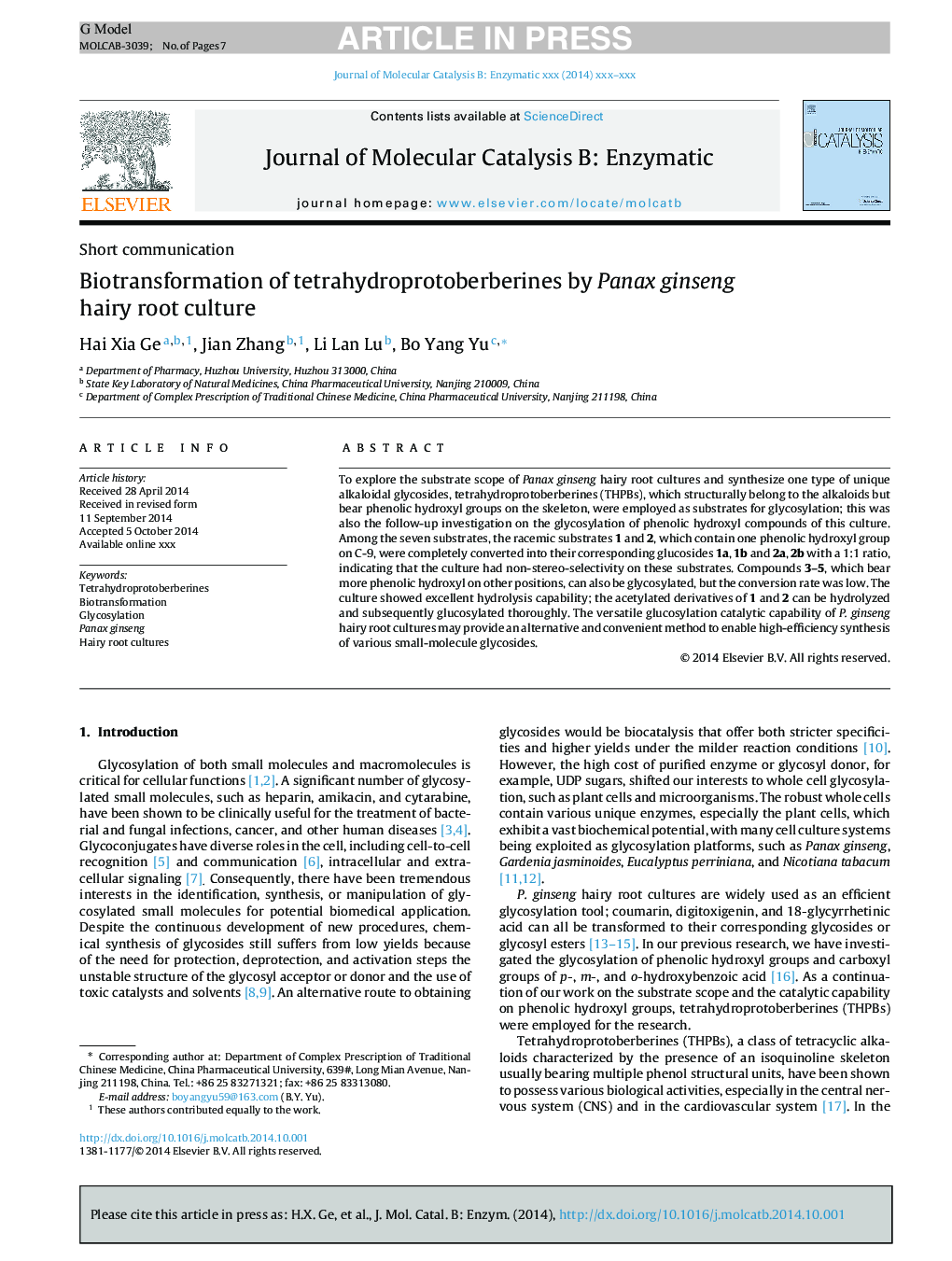| Article ID | Journal | Published Year | Pages | File Type |
|---|---|---|---|---|
| 6531127 | Journal of Molecular Catalysis B: Enzymatic | 2014 | 7 Pages |
Abstract
To explore the substrate scope of Panax ginseng hairy root cultures and synthesize one type of unique alkaloidal glycosides, tetrahydroprotoberberines (THPBs), which structurally belong to the alkaloids but bear phenolic hydroxyl groups on the skeleton, were employed as substrates for glycosylation; this was also the follow-up investigation on the glycosylation of phenolic hydroxyl compounds of this culture. Among the seven substrates, the racemic substrates 1 and 2, which contain one phenolic hydroxyl group on C-9, were completely converted into their corresponding glucosides 1a, 1b and 2a, 2b with a 1:1 ratio, indicating that the culture had non-stereo-selectivity on these substrates. Compounds 3-5, which bear more phenolic hydroxyl on other positions, can also be glycosylated, but the conversion rate was low. The culture showed excellent hydrolysis capability; the acetylated derivatives of 1 and 2 can be hydrolyzed and subsequently glucosylated thoroughly. The versatile glucosylation catalytic capability of P. ginseng hairy root cultures may provide an alternative and convenient method to enable high-efficiency synthesis of various small-molecule glycosides.
Related Topics
Physical Sciences and Engineering
Chemical Engineering
Catalysis
Authors
Hai Xia Ge, Jian Zhang, Li Lan Lu, Bo Yang Yu,
